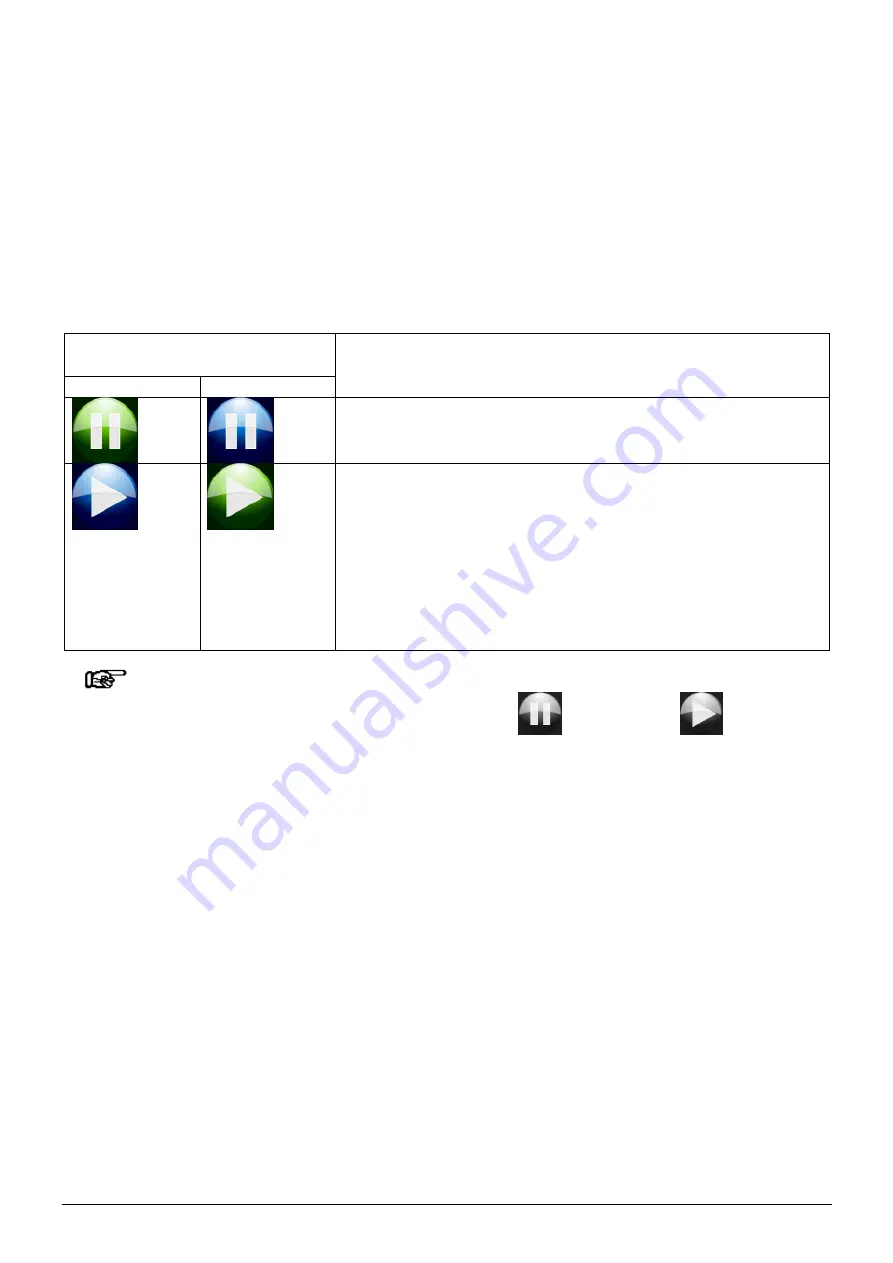
ManagerIQEasy_UM_9752103002_GB_V3_1
27
6.5 Operating modes
6.5.1 Standby and Run
The Manager IQ Easy system has two basic operating modes. Either a Device is active and can
emit high voltage, or a Device is not active and cannot emit high voltage. The active state is called
‘Running’, the inactive state ‘Standby’.
This colour used for the operating modes depends on the parameter “
Run state display colour
green
”. Adjusting the parameter “
Run state display colour green
” is described in Section
6.17.10.
“Run state display colour green”
value
Operating mode
No.
Yes
The Device is in Standby and is not active. Charging and
neutralising equipment will not emit high voltage, sensors
and detectors will not measure.
The Device is in Running mode and is active. Charging and
discharging equipment will deliver high voltage, sensors
and detectors will measure. However, this depends on the
parameter set “
Remote on/off source
”. By default, this
parameter will be set to “
Continuous
” in the Device and
will emit or measure high voltage. However, if the
parameter is set as “
Remote
” or “
Fieldbus
”, the Device will
only emit or measure high voltage if the set Remote I/O or
Fieldbus input is also active.
Note:
- If the IQ Easy Manager is active in fieldbus mode, the
(Stand-by) en
(Run)
buttons are disabled. The PLC will then be the master of the system via the fieldbus and will
determine which Devices will be set to Standby and Run.
6.5.2 Autorun mode
Devices can have a “
Autorun
” parameter. The system will automatically put Devices that have
thi
s parameter and whose setting is set to “
Yes
” into Running mode in the event of a system
startup and for a Global Run (set from the HMI parameter screen). Devices that have this parameter,
but where this parameter is set to “
No
”, will remain in Standby and can be set to Running mode
separately via the Device parameters screen (see Section 6.11.1).






























